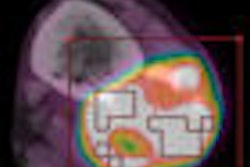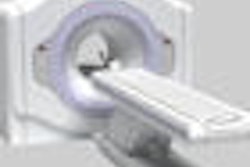MRI and PET/CT performed before treatment for cervical cancer direct women to the most appropriate therapy and spare them from potential long-term morbidity and complications of trimodality therapy, such as surgery followed by chemoradiation.
The findings come from a decision-analytic model developed by researchers at the Institute for Technology Assessment at Massachusetts General Hospital (MGH) in Boston. The multidisciplinary team worked on the model for about two years to determine the value of pretreatment imaging with MRI and/or PET/CT in patients with International Federation of Gynecology and Obstetrics (FIGO) stage IB cervical cancer.
Without imaging, these patients would usually be treated first with surgery, followed by chemoradiation depending on the extent of disease found at surgery. Imaging preoperatively identifies those patients who have advanced disease and would not be cured with surgery alone, but who could be cured with chemoradiation alone.
One goal of the study, published in the March 2009 issue of the American Journal of Roentgenology (Vol. 192:3, pp. 802-814), was to understand how reported MRI and PET/CT sensitivity and specificity affects treatment decisions, which, in turn, can have substantial long-term implications on patient care and ensuing quality of life.
Key outcomes
"Test performance, sensitivity, and specificity [have] been reported, but the long-term implications of using those tests had not been explored," said lead author Dr. Pari Pandharipande, assistant radiologist in abdominal imaging at MGH. "We wanted to predict the salient, key outcomes that imaging would improve." Those outcomes covered in the study include triage to correct treatment, avoiding unnecessary overtreatment, and survival.
The advantage of such a decision-analytic model, she added, is that it "can take available data and weigh the consequences of false-negative and false-positive results with true-negative and true-positive results, while integrating the underlying probability of having advanced disease."
The study was based on previously published research, rather than its own patient sample, to analyze the consequences of PET/CT and MRI results and how they would direct a patient toward treatment for cervical cancer. "We were explicit in our work as to how test results influenced decisions, such as: Does the patient get chemoradiation or surgery? Under what setting would they or would they not?" Pandharipande noted. "What is the disadvantage of getting surgery, plus chemotherapy, plus radiation?"
Modality of choice
Researchers found that the pretreatment modality of choice is best made on an individual basis between a gynecologist and an oncologist, because each preoperative staging strategy has different implications for each patient. The analysis also showed that although pretreatment imaging does not improve survival, PET/CT resulted in the highest percentage of patients receiving correct primary therapy (89%), and the use of both MRI and PET/CT spared the most patients of trimodality therapy (95%).
"At the individual patient level, PET/CT optimizes the number of patients that go to the correct initial treatment, and combined PET/CT and MRI spare the most patients of unnecessary trimodality therapy; that is, surgery followed by chemoradiation," Pandharipande said. "That triple combination is associated with substantial side effects down the line. PET/CT does well in triaging patients to the correct primary treatment, whether it be surgery or chemoradiation. The combined strategy spares the most number of patients from having both, but it performs less well in triaging patients to the correct initial treatment."
The study cited PET/CT's high specificity (97%) as one reason for the modality's prevention of unnecessary primary chemoradiation for cervical cancer patients when surgery is a viable option.
"Patients with true- or false-negative results proceed to surgery where advanced disease that was undetected at PET/CT can be identified and treated with adjuvant chemoradiation," the authors wrote. "Therefore, the number of cases in which lymph node involvement is missed is minimized and the percentage of patients who are undertreated is low, accounting for the slightly higher five-year survival associated with PET/CT compared to strategies that included MRI."
MRI versus PET/CT
By comparison, the authors noted that MRI performed "relatively poorly as a standalone imaging strategy for evaluating the extent of disease in early cervical cancer -- it was less preferable than PET/CT for all outcomes and less preferable than the no-imaging strategy when comparing associated survival and triage to correct therapy."
MRI and PET/CT are different in that MRI can look for the extent of pelvic tumor, such as parametrial extensions, while PET/CT does not typically have the resolution to accomplish this. PET/CT is superior to MRI in identifying malignant lymph nodes. For the combined strategy of MRI and PET/CT, researchers used PET/CT make the decisions about the lymph nodes, while MRI was used for the parametrial extensions.
As a result, the combination of PET/CT and MRI produced the greatest percentage of patients spared trimodality therapy. "Patients with positive staging results for parametrial extension or lymph node involvement ... received primary chemoradiation and, therefore, were not subject to trimodality therapy," the authors wrote.
Continuing research
As for continuing the study, the researchers would like to clarify how a clinician might use the study results and the model. "The bottom line is that [the model] doesn't prescribe one imaging strategy as the best -- either PET/CT and MRI, or PET/CT alone, could be preferred, depending on what adverse long-term outcome risk is least desired." Pandharipande said.
So far, researchers have been precluded from creating a lifetime model of cost and life expectancy, because previous literature has not quantified the effects of trimodality therapy. "Because of that, we felt it wasn't valid at this point to make many assumptions about the quality of life and cost implications of morbidity incurred from trimodality therapy," she added.
It is very important that "radiologists look at not only what we do, but at how patients are affected throughout the course of their disease," Pandharipande emphasized. "Research that addresses how imaging tests impact treatment decisions not only benefits patient care directly, but also focuses further research into clinical areas that are most beneficial for patients long-term. This approach goes toward the overall goal of improving cancer care."
By Wayne Forrest
AuntMinnie.com staff writer
March 27, 2009
Related Reading
NOPR: PET changes care of more than a third of cancer patients, October 6, 2008
Total tumor biology impacts cervical cancer regression during EBRT, January 30, 2008
PET/CT shows its worth in cervical carcinoma, January 18, 2008
Early invasive cervical cancer imaging better with MRI than CT, November 8, 2007
FDG-PET, MRI show worth in tumor treatment response, November 2, 2007
Copyright © 2009 AuntMinnie.com



















